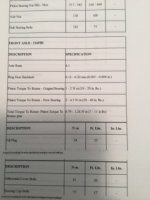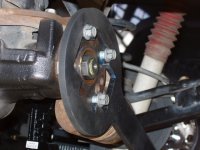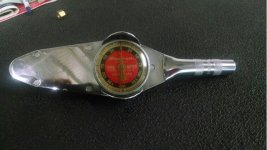JeepJeep75
New member
Hello all! I have a few concerns about my upcoming front Adams driveshaft installation. I've read through several threads and have looked at the install write-up done by Eddie. My biggest concern is I DO NOT want to f*ck up my pinion gear by over tightening the pinion flange nut. In step 9 of this write-up:
http://project-jk.com/jeep-jk-write...-front-1310-drive-shaft-installation-write-up
It is said to use 160 foot-pounds of torque to tighten the nut. Here's where I'm finding different info. In the Adams installation video, they say just tighten until the flange is tight. I don't have a factory service manual, so I'm not sure what an inch-pound wrench is needed for as Eddie mentions would be helpful, but not needed.
So, what are you guys (or gals) tightening the front flange nut down to? 160 foot pounds like the write-up says? Or just enough to make the flange not wiggle? I realize that everyone's idea of tight can vary greatly. I want to use the torque spec provided in the JK write up but I afraid I'm gonna over-do it. Everyone's opinion is appreciated!! Thank you!!
http://project-jk.com/jeep-jk-write...-front-1310-drive-shaft-installation-write-up
It is said to use 160 foot-pounds of torque to tighten the nut. Here's where I'm finding different info. In the Adams installation video, they say just tighten until the flange is tight. I don't have a factory service manual, so I'm not sure what an inch-pound wrench is needed for as Eddie mentions would be helpful, but not needed.
So, what are you guys (or gals) tightening the front flange nut down to? 160 foot pounds like the write-up says? Or just enough to make the flange not wiggle? I realize that everyone's idea of tight can vary greatly. I want to use the torque spec provided in the JK write up but I afraid I'm gonna over-do it. Everyone's opinion is appreciated!! Thank you!!



